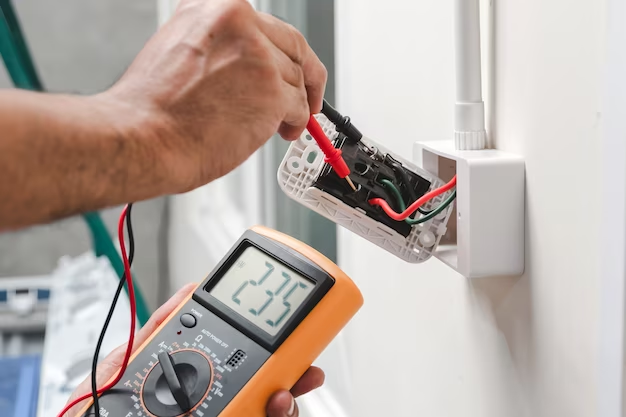Australia’s solar energy capacity has been soaring, with a substantial increase in both residential and commercial installations. This surge is fuelled by the country's vast solar resources, falling costs of photovoltaic (PV) panels, and a growing awareness of the environmental impact of fossil fuels. As a result, solar has become an increasingly attractive option for those looking to reduce their carbon footprint and energy bills.
If you're ready to ride the wave of Australia's solar revolution, here's what you've got to factor in:
Understanding Solar PV Systems
Solar PV systems convert sunlight directly into electricity. They are composed of several components, including solar panels, an inverter, and a monitoring system. The panels, typically mounted on the roof, absorb sunlight and generate direct current (DC) electricity. This is then converted into alternating current (AC) by the inverter, making it usable for homes and businesses. A monitoring system allows owners to track their system's performance and energy production.
Integrating Batteries with Solar Systems
Solar batteries have revolutionised the way energy from solar panels is utilised, allowing excess energy to be stored rather than fed back into the grid. This stored energy can be used at night or during peak times when electricity prices are higher, further reducing electricity bills. Moreover, batteries provide a degree of energy security, offering backup power during outages.
Selecting the right battery system is paramount. Considerations include the size of the installation, which is typically measured in kilowatts (kW), the quality of the components, and the specific energy needs of the household or business. An experienced service provider can assess these needs and recommend a system that is both cost-effective and efficient.
The Importance of Hiring Professional Solar Installation Services
Having a reliable solar service like MC Electrical & Communications to maximise the efficiency and safety of your solar PV system is critical. Here is what a professional solar installation company can bring in:
- Expert Assessment and Design: Professional solar installers conduct a thorough assessment of your property to determine the best configuration for your solar panels, taking into account factors such as roof orientation, angle, shading, and local climate conditions.
- Safety: Solar installation involves working with electricity and often at heights. Professional installers are trained to manage these risks effectively, ensuring that the installation is safe for both the installers and the home or business owner.
- Quality Workmanship: Certified solar professionals have the experience and skills to ensure that the installation is performed to the highest standards, which can affect the system's longevity and efficiency.
- Maximised Efficiency: Experts ensure that every component is installed correctly and configured for optimal performance. This includes proper panel placement, secure and conductive wiring, and efficient inverter setup.
- Warranty Protection: Many warranties for solar panels and components are only valid if the installation is carried out by a licensed professional. DIY installations could void these warranties.
- Compliance with Regulations and Standards: Australian standards and local building codes must be adhered to when installing solar systems. Professional installers are knowledgeable about these requirements and ensure compliance.
- Energy Efficiency Advice: Beyond just installing solar panels, experts can provide valuable advice on how to make your entire home or business more energy-efficient.
- Network Connection and Rebates: Professionals can assist with the often-complex process of connecting your system to the electricity grid and advise on any government rebates or incentives for which you may be eligible.
The Solar Financial Incentives in Australia
Talking about incentives, the Australian government offers financial subsidies to promote the installation of solar and batteries. These include Small-scale Technology Certificates (STCs), which are provided upfront and can significantly reduce the cost of installation. Additionally, various state-based incentives and rebates can make the initial investment more affordable.
The Role of Feed-in Tariffs
Feed-in tariffs (FiTs) are payments made to households or businesses for excess electricity generated by their solar system and fed back into the grid. These tariffs vary by state and energy provider, and they can significantly offset the cost of energy used from the grid. In Australia, this is typically called the buy-back rate, where you're credited on your energy bills for each kilowatt-hour of surplus power that your solar system contributes back to the grid.
Maintenance and Upkeep of Solar Systems
While solar systems are relatively low maintenance, regular checks are necessary to ensure they are operating optimally. Potential issues such as dust build-up, shading from new structures or trees, and equipment wear can reduce the amount of electricity generated. A professional service provider can conduct these checks and perform any necessary maintenance.
The Environmental Impact of Going Solar
Adopting solar power with battery storage goes beyond mere cost savings; it represents a significant step towards environmental stewardship:
- Carbon Footprint Reduction: Each solar installation helps to diminish the dependency on coal and gas, thereby cutting down on greenhouse gas emissions.
- Supports National Goals: By going solar, you're contributing to the achievement of Australia’s Renewable Energy Target (RET).
- Clean Energy: Solar panels generate energy without air pollution, promoting a cleaner atmosphere.
- Resource Conservation: Harnessing solar power lessens the strain on our planet's limited fossil fuel reserves.
- Sustainable Growth: Every solar system installed is a building block in Australia's transition to a sustainable energy future.
- Ecosystem Preservation: By reducing harmful emissions, solar energy helps preserve diverse ecosystems affected by global warming and pollution.
Future Trends in Solar Technology
Innovation in solar technology continues at a rapid pace. Advancements in PV panel efficiency, battery storage capacity, and smart home integrations promise even greater efficiencies and conveniences for solar system owners. Australia, with its robust research sector and supportive regulatory framework, is poised to remain a global leader in solar technology.
Powering Australia's Future Sustainably
Solar and battery installations offer a compelling proposition for Australians looking to reduce their energy costs and environmental impact. Professional services not only provide the expertise needed to design and install these systems but also ensure that they are tailored to the unique needs of each client.
With continued technological advancements and supportive government policies, the future of solar energy in Australia shines bright. It's not just about energy independence; it's about being part of a more significant movement towards a sustainable and renewable future.







